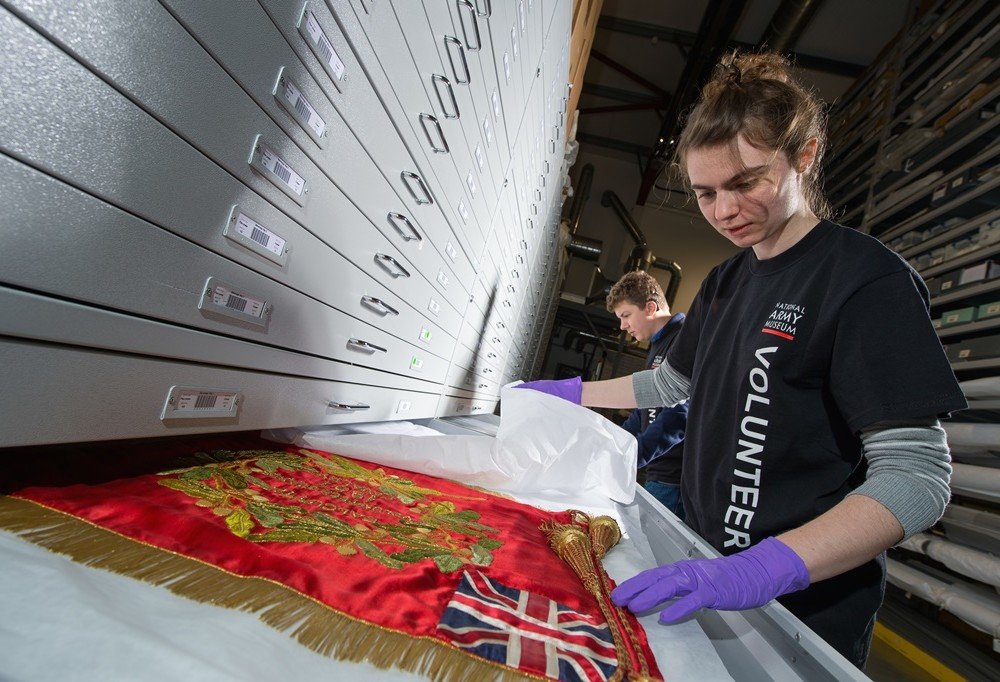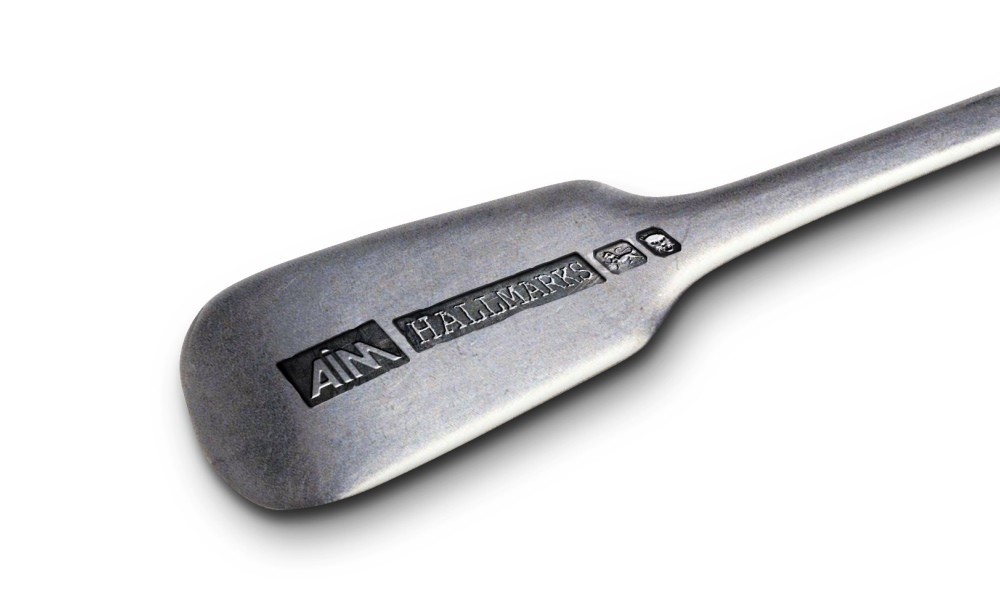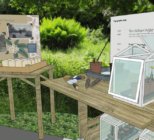I’m always inspired by the resilience, creativity, and passion of those who work in the sector. Almost everyone I’ve met is engaging with heritage in a personal and relevant way. Yet, while most individuals in the sector are overflowing with ideas, our museums often don’t reflect this.
Driven by cuts or funding priorities, the organisational will to see things as an opportunity to improve and prosper can be stifled. So how can we recapture this desire for improvement, pull ourselves out of the pragmatism of the day-to-day, and find the joy in strategic change?
Whenever I say the phrase “strategic change” to my husband, I see a strange haze form across his eyes (it’s a similar look to when I ask him to take the bins out). I saw the same glazed look across the faces of my colleagues during my postgraduate degree. They couldn’t understand why, when there was so much to learn about objects, I was reading management journals.
As a consultant, I often meet organisations at a point of crucial change. Some are responding to a successful Resilience Grant, others are struggling under the weight of a disengaged board. Many people see strategic change as an upheaval only to be undertaken in the direst of circumstances.
I don’t believe this is right. There are unbelievable positives to embracing a season of strategic change. Thriving, forward-thinking museums are flexible, innovative, engaging places to visit and work. They take all the best, and worst, parts of our history and present them in a relevant and exciting way. They use visitor feedback to shape their activities, marketing and funding strategies. They are not afraid of risk. They inspire the next generation of engineers, historians, scientists and heritage professionals.
Unfortunately, these things don’t happen overnight: they need a long term strategy. But why should we perceive the journey to be boring and end result so exciting? For me, one of the most encouraging resources launched in the last three years is the Association of Independent Museum’s “Hallmarks of Prospering Museums”. Funded by Arts Council England, the Hallmarks are a series of statements outlining the activities and culture of thriving museums and I should say, we at Tricolor believe they are applicable to other heritage and voluntary organisations alike — anyone who is developing cultural product for specific audiences.
The Hallmarks worked well as aspirational targets, but were lacking in practical application. But now, AIM have released Preparing to Prosper, a resource that takes each hallmark and explores it in more detail. The release of this resource has been my Museum Moment of 2018 (so far!) and I think it signals a pivotal moment for the sector.
“Preparing to Prosper crystallises all the learning from AIM’s Hallmarks programmes to date in an easy to read and engaging format. The publication shows museums and heritage organisations how they can tackle challenges around every area of their operation in an informed, practical and creative way,” – Emma Chaplin, Director of AIM.
Preparing to Prosper uses case study examples and searching questions to prompt discussion and inspire change. Despite being aimed at museums, we believe the fundamental principles outlined in ‘Preparing to Prosper’ should be given to all organisations applying for Resilience Funding from HLF.
There are eight Hallmarks in total, I’ve selected four key to explore in more detail, but you can find the link to all of the hallmarks here.
Purpose
Understanding why your organisation exists, and its founding principles, is one of the best ways to begin. The likelihood is that these themes are as important now as they were then. Where organisations often fall short is translating founding principles into relevant purpose statements that are contemporary to the current context.
The Hallmarks recommend any purpose statement is “clear, compelling, and people oriented”. If your organisation is missing a clear purpose, or if you’re not sure, the best place to start is with a period of self-reflection. Ask Board members to explain what the purpose is in a sentence or run a small survey of your visitors. This will soon highlight whether the organisation is missing a purpose statement.
Whether the statement needs writing, amending or tweaking, involving staff, volunteers and audiences in the process is essential. Creating a statement that people are are passionate about is integral to the process. Then, once agreed, spend some time reflecting on how you’re going to track the use of the new statement. Take the time to think about how to build this into every activity, meeting, or informal chat in the office. You’re one step closer to organisational culture shift.

Visitor Focus
No one knows a museum or heritage site as well as its staff and volunteers. They know every gallery, their favourite object and the typos on the board. But this intense knowledge can make staff blind to how visitors feel within the space.
Understanding how audiences view your organisation is key to making it relevant to them. I’ve written another article on this in more detail here, which you might find helpful. There are lots of different ways to understand your audience. The Audience Agency ‘Audience Finder’ is a comprehensive resource that is a good place to start if you don’t know your local community.
Museum Hack
Museum Hack is a US initiative that aims to re-engage young audiences with museums. They use storytelling, humour and wine to open up museum galleries to millenials. As an outsider, they bridge the gap between non-engaged audiences and the museum, opening doors in a new and exciting way. If this sounds like something you’d like to try in your heritage site, you can read more about Museum Hack on AIM’s website here.
Awareness and Networks
Being aware of your professional and community networks is a trait of a thriving museum. However, when finances are tight and staff overstretched it can be tempting for the field of external awareness to reduce, looking no further than the museum’s wall. Asking questions like “How well are we known by our community?” and “How do we identify external developments that might affect us?” can help widen your horizons again.
Working with other museums or arts organisations can be mutually beneficial. The cultural sector continues to be a collaborative network, co-promoting, co-producing, and co-marketing on projects to reach more diverse audiences. If your organisation is rural, being part of a regional network might be more beneficial. For example, the Cornwall Museums Partnership unites museums from across an entire county.
There’s also nothing to stop you setting up a new professional network if there is a need in your region. But all this requires an awareness that can only be learnt from looking beyond the museum’s doors.
Innovation and Risk
Being risk averse is a common trait exhibited by many organisations, but it can stifle creativity. As outlined in Preparing to Prosper “If you want creative people, you have to let them play.” Allowing time for staff development and idea creation is one you can begin to build this culture.
Being an organisation that is resilient requires flexibility, innovation and openness. To do this, staff need to feel supported in their innovation, in a culture that is risk-supporting, and does not point fingers when things go wrong.
Implementing this type of behaviour in your organisation doesn’t have to be scary. Using low cost methods of trying out new ideas mean you can learn from them quickly. This reduces the financial implications of a big project going wrong at the last minute. There is nothing more exciting than seeing an innovative idea succeed. It brings a huge buzz to the whole organisation, and can lead visitors to have really inspiring experiences.
As we’ve seen from these examples, strategic change doesn’t have to be a painful upheaval. It’s about making key decisions with a positive attitude and a long-term focus. By using AIM’s Preparing to Prosper document these discussions can be come from a positive place. It is possible to find a joyful way to manage strategic change.

Case Study: Wisbech and Fenland Museum - Options Appraisal
The Wisbech and Fenland Museum (WFM) had recently been informed that their core funding was going to be significantly reduced by 2019. The museum used this as an opportunity for change and, following a grant from the HLF’s ‘Resilient Heritage’ programme, implemented changes to make the museum ‘Fit for the Future’.
Part of the ‘Fit for the Future’ programme was to assess the current business situation of WFM, and they commissioned Tricolor to conduct an options appraisal on future business activities. The options appraisal provided a viable business model for the future, highlighting where income could be generated towards the operational needs.
The museum was operating at a loss, even with the core funding, so the first task was to discover if there was a demand for the museum from the local community and to find out why the local community was not attending. This was completed through thorough consultation. This information was used in conjunction with a significant amount of comparator research to create short, medium and long-term recommendations for future for the museum.
If you would like more information, support or advice strategic change in your museum, Tricolor can help. We have many years working with heritage organisations of all shapes and sizes, running governance reviews and change management plans.
Tricolor is offering a free planning session to readers using the code MHCHANGE, through our website tricolorassociates.co.uk/contact-us/
To find out more about Tricolor and the work we do, follow us on Twitter @TricolorHeritag and Facebook – @TricolorAssociates












